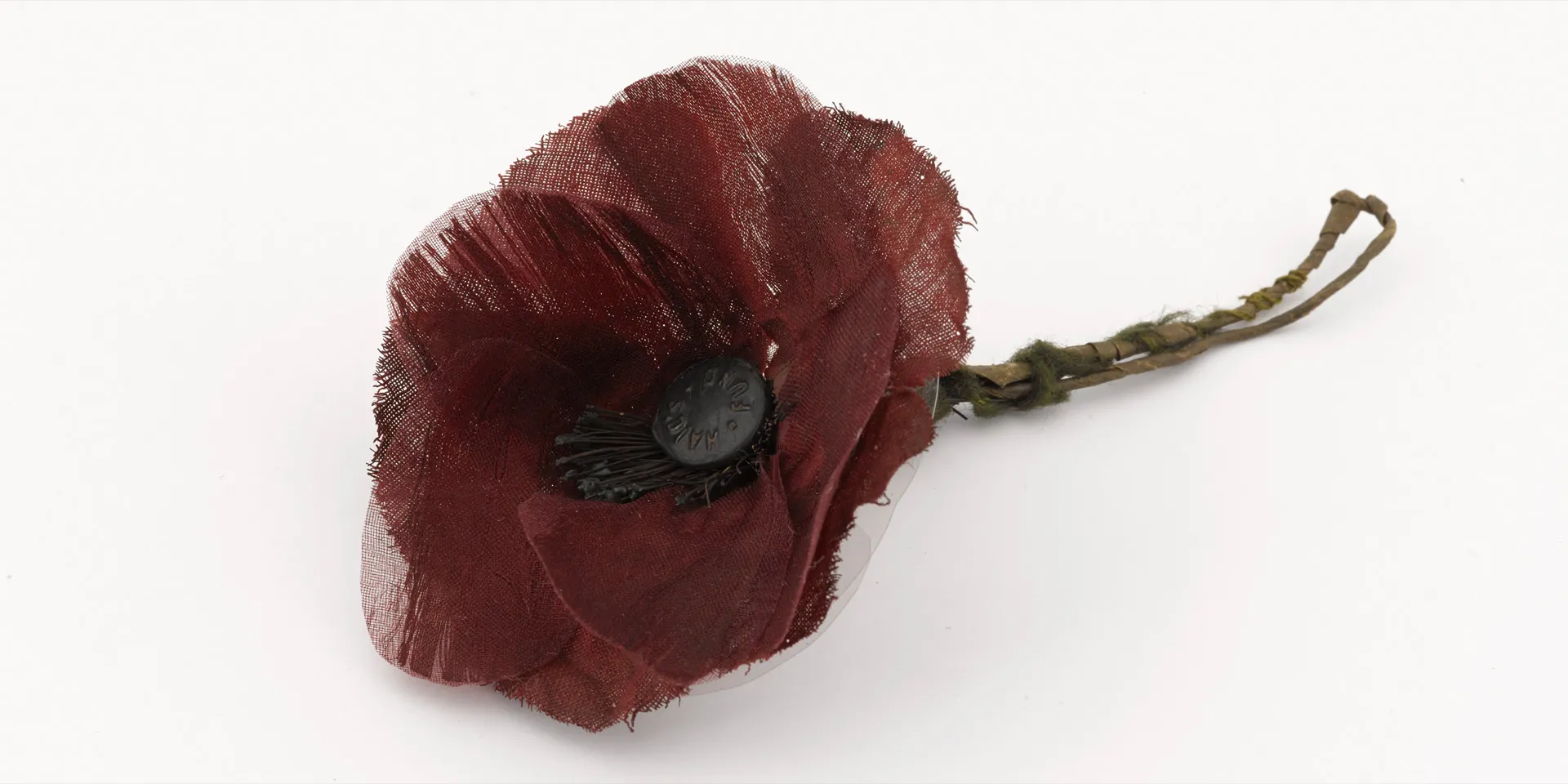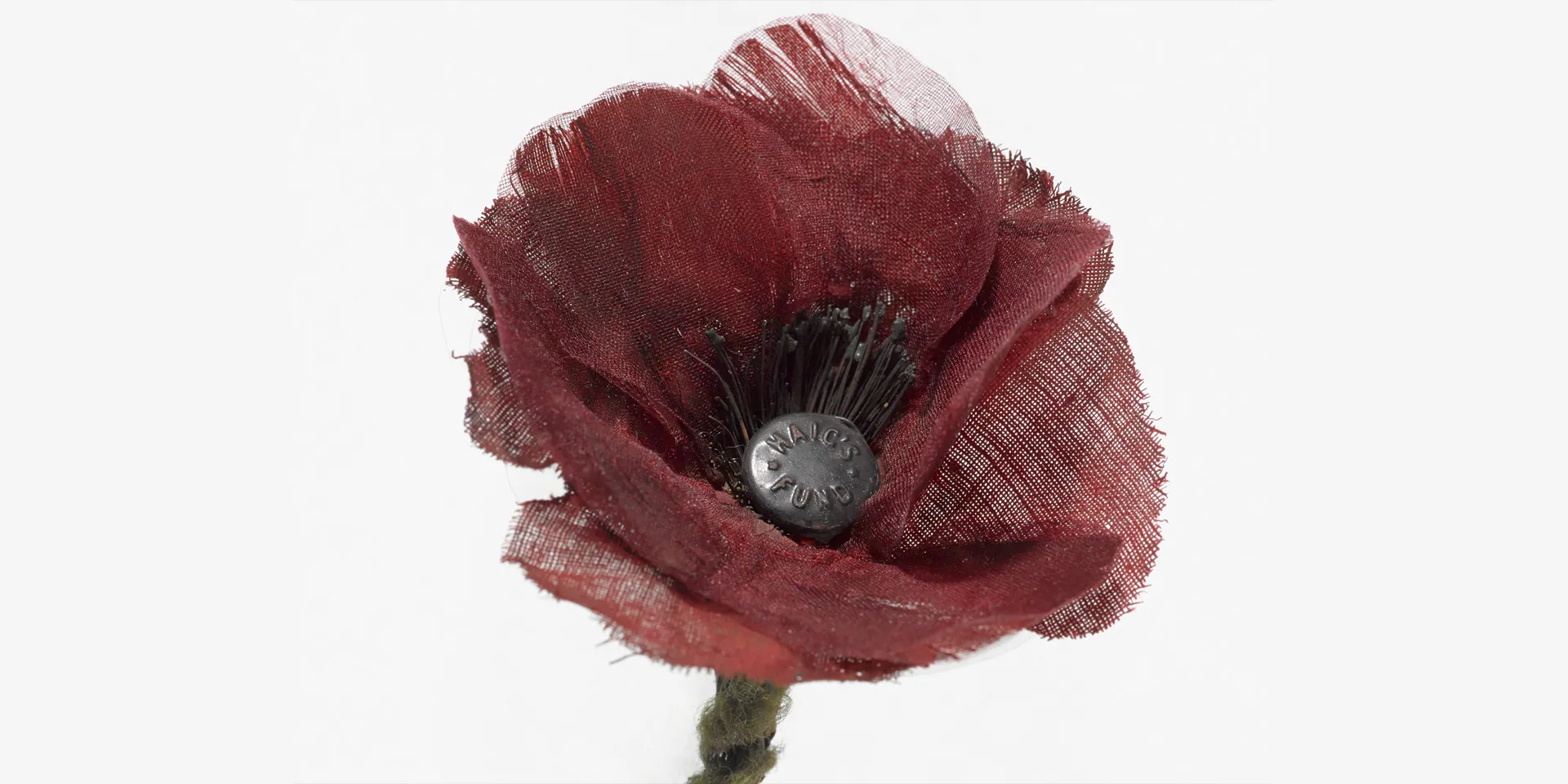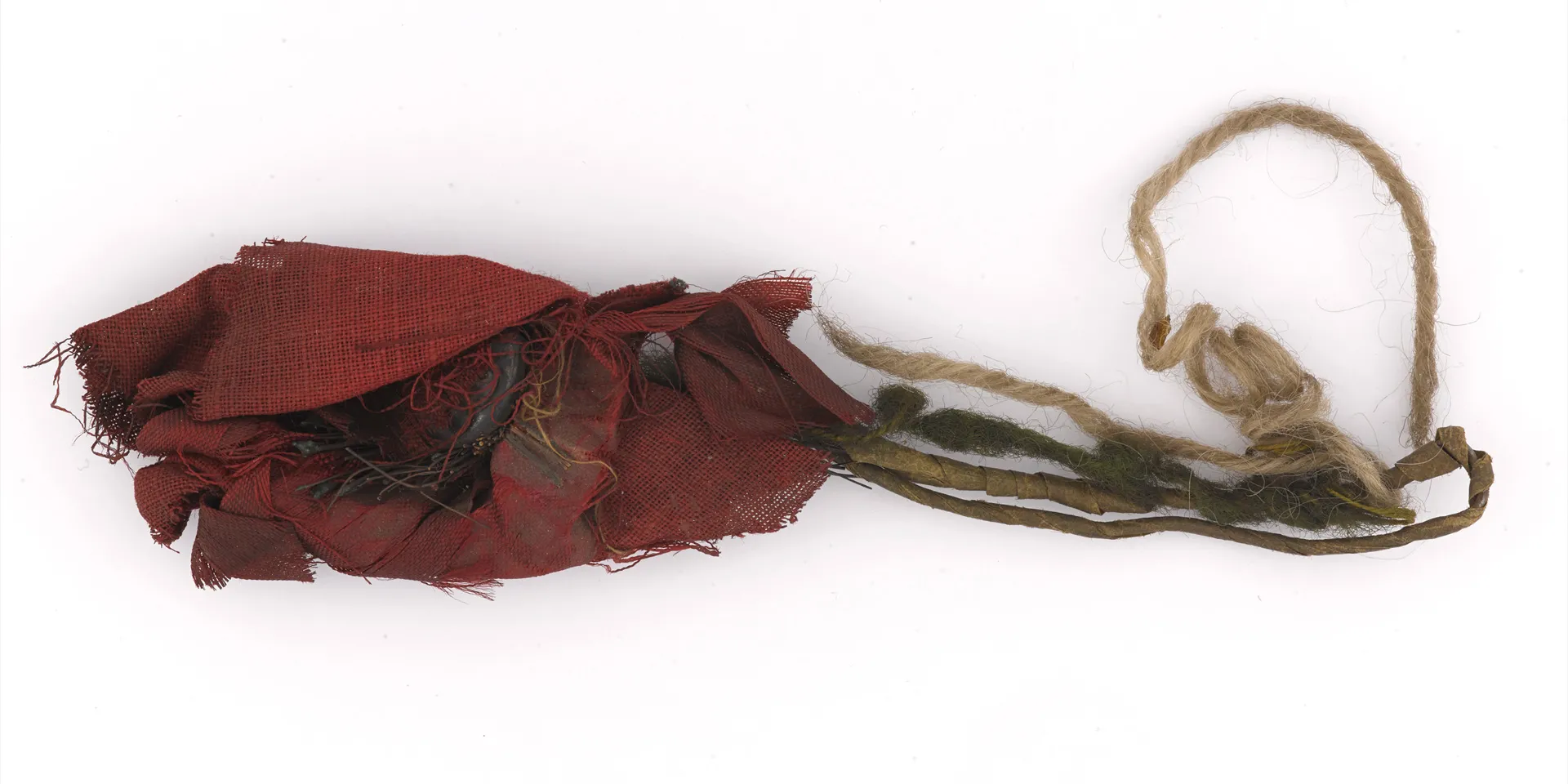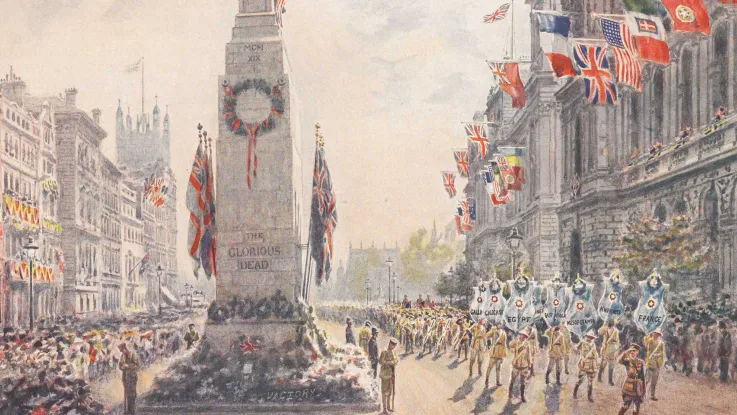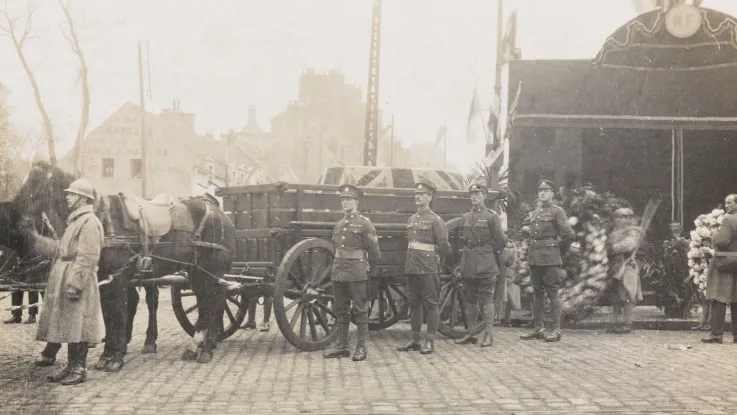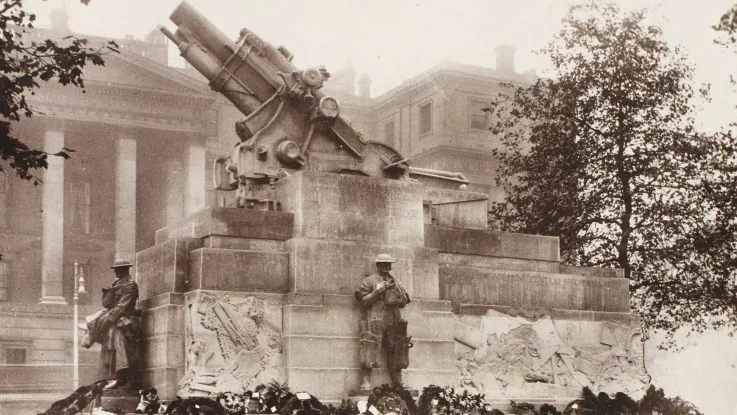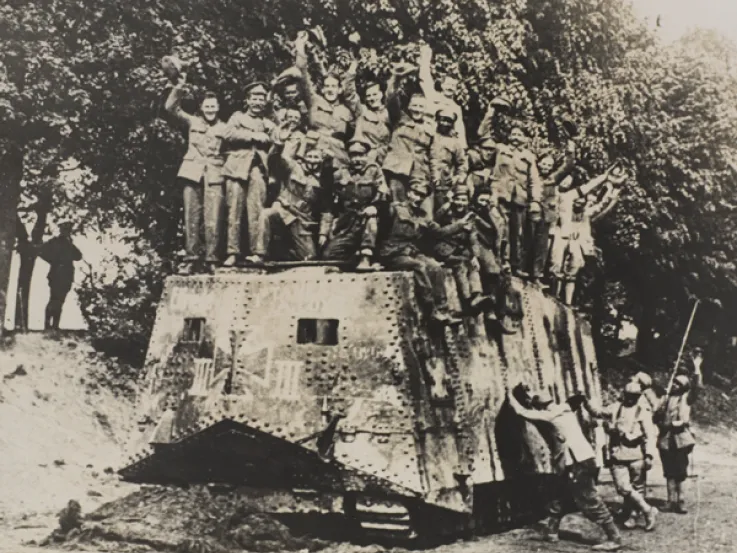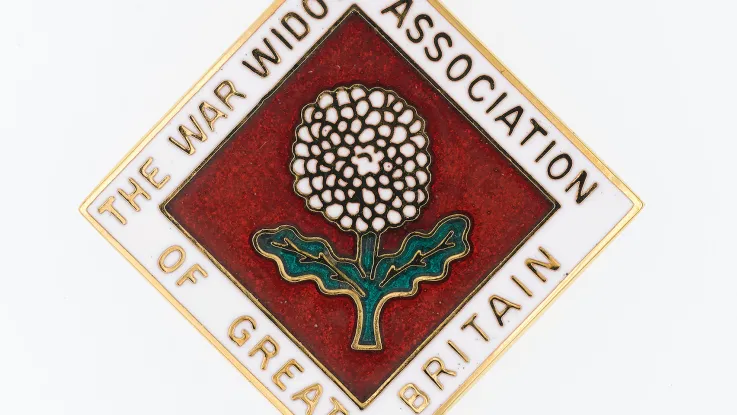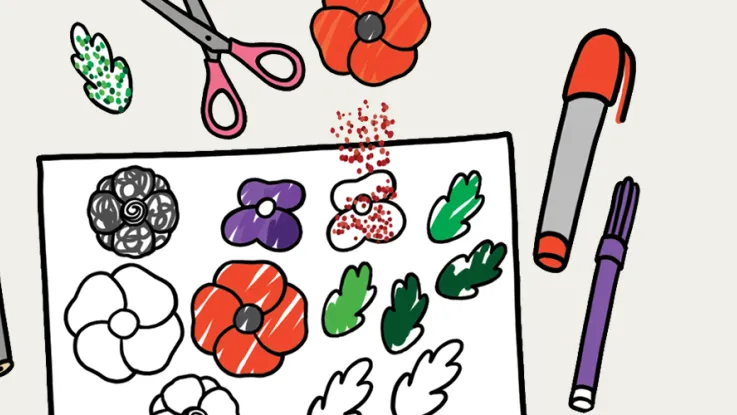Poppies and remembrance
The tradition of Remembrance Day was started by King George V in 1919, a year after the First World War ended. But poppies were not worn until 1921, following the foundation of the Royal British Legion.
A year later, Major George Howson established a poppy factory in London. The demand for poppies grew so high that a distinct shortage was felt in Scotland. In 1926 the wife of Field Marshal Earl Haig established a poppy factory in Edinburgh to produce poppies exclusively for sale north of the border.
In Flanders' fields the poppies blow Between the crosses, row on row, That mark our place: and in the sky The larks, still bravely singing, fly Scarce heard amid the guns below.'In Flanders Fields', John McCrae — 1915
Why poppies?
The sight of poppies growing on the Western Front, despite the devastation of the First World War, inspired the Canadian Lieutenant Colonel John McCrae to write his famous poem 'In Flanders Fields' in 1915. This, in turn, prompted the American academic Moina Michael to start making and selling silk poppies.
Michael's poppies were first brought to England by a French woman, Anna Guérin. She sold over 9 million to the Royal British Legion to raise funds for veterans' housing and employment in 1921.
Scottish appeal
The first Scottish poppy appeal was launched in 1926. At that time, manufactured poppies were made from a range of materials such as silk and paper, which were sold at different prices.
In 1954 it was decided that only one style of paper poppy should be produced. This was no longer sold for a set price, but given as a token in return for a donation to charity.
Lady Haig’s Scottish poppies had four petals. Ever since, poppies sold in Scotland differ from the two-petal design found in England, Wales and Northern Ireland.
Making the poppy bloom again
Before going on display, our Scottish poppy was crushed and misshapen, with the petals folded in on themselves. The fabric was soiled and fraying, and the silk inner petals were invisible except for broken fibres falling from the centre.
Conservators worked gradually, first cleaning the outer petals with a micro-vacuum and then carefully easing them open in a stream of steam from an ultra-sonic humidifier. Eventually, the outer petals could be opened and flattened and pinned out to shape.
When revealed, the silk inner petals were found to be extremely fragile. After cleaning and steaming, special material was used to support the fabrics that were too weak to be stitched. This was heat-sealed in place using a spatula iron.
Finally, the outer petals were supported by a collar of film to hold the flower in shape.
Haig's Fund
This poppy dates from the 1930s. As a result of the conservation work, the centre of the flower is now clearly visible with its lettering, which reads 'Haig's Fund'. In 1994, the words in the centre of such poppies changed from ‘Haig's Fund’ to ‘Poppy Appeal’.
The separate and distinct Scottish Poppy Appeal, operated by The Earl Haig Fund (Scotland), was renamed Poppyscotland in 2006. This merged with the Royal British Legion in 2011, but continues to operate as a distinct charity.

